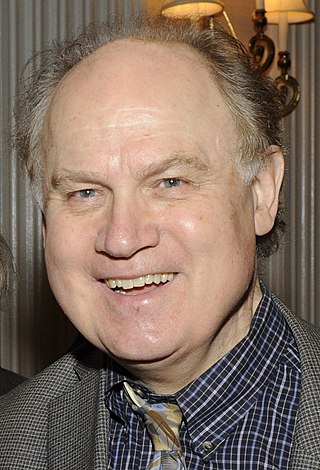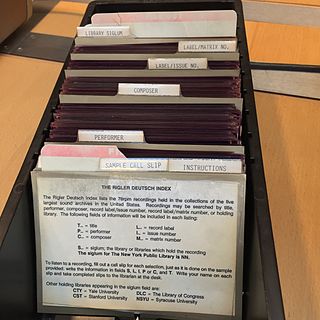
Digitization is the process of converting information into a digital format. The result is the representation of an object, image, sound, document, or signal obtained by generating a series of numbers that describe a discrete set of points or samples. The result is called digital representation or, more specifically, a digital image, for the object, and digital form, for the signal. In modern practice, the digitized data is in the form of binary numbers, which facilitates processing by digital computers and other operations, but digitizing simply means "the conversion of analog source material into a numerical format"; the decimal or any other number system can be used instead.
In library and archival science, digital preservation is a formal process to ensure that digital information of continuing value remains accessible and usable in the long term. It involves planning, resource allocation, and application of preservation methods and technologies, and combines policies, strategies and actions to ensure access to reformatted and "born-digital" content, regardless of the challenges of media failure and technological change. The goal of digital preservation is the accurate rendering of authenticated content over time.
The Music Library Association (MLA) of the United States is the main professional organization for music libraries and librarians. It also serves corporations, institutions, students, composers, scholars and others whose work and interests lie in the music librarianship field. National meetings occur annually.

Richard K. "Dick" Spottswood is an American musicologist and author from Maryland, United States who has catalogued and been responsible for the reissue of many thousands of recordings of vernacular music in the United States.

The National Film and Sound Archive of Australia (NFSA), known as ScreenSound Australia from 1999 to 2004, is Australia's audiovisual archive, responsible for developing, preserving, maintaining, promoting, and providing access to a national collection of film, television, sound, radio, video games, new media, and related documents and artefacts. The collection ranges from works created in the late nineteenth century when the recorded sound and film industries were in their infancy, to those made in the present day.

The conservation and restoration of vinyl discs refers to the preventive measures taken to defend against damage and slow degradation, and to maintain fidelity of singles, 12" singles, EP’s, and LP’s in 45 or 33⅓ rpm 10" disc recordings.
Oral history preservation is the field that deals with the care and upkeep of oral history materials, whatever format they may be in. Oral history is a method of historical documentation, using interviews with living survivors of the time being investigated. Oral history often touches on topics scarcely touched on by written documents, and by doing so, fills in the gaps of records that make up early historical documents.
Leonard Richard "Len" Kunstadt was an American scholar of jazz and blues music, and a record label manager.
The Audio-Visual Preservation Trust of Canada. originally the Alliance for the Preservation of Canada's Audio-Visual Heritage, was a charitable non-profit organization dedicated to promoting the preservation of Canada's audiovisual heritage, and to facilitating access to regional and national collections through partnerships with members of Canada's audiovisual community.

Peter Michael Copeland was an English sound archivist.
Music librarianship is the area of librarianship that pertains to music collections and their development, cataloging, preservation and maintenance, as well as reference issues connected with musical works and music literature. Music librarians often have degrees in both music and librarianship. Music librarians deal with standard librarianship duties such as cataloging and reference, which become more complicated when music scores and recordings are involved. Therefore, music librarians generally read music and have at least a basic understanding of both music theory and music history to aid in their duties.

Tim Brooks is an American television and radio historian, author and retired television executive. He is credited with having helped launch the Sci Fi Channel in 1992 as well as other USA Network projects and channels.

The International Association of Sound and Audiovisual Archives (IASA) was established in 1969 to serve as a forum for international co-operation between archives, libraries, and individuals interested in the preservation of recorded sound and audiovisual documents.

The National Recording Preservation Plan is a strategic guide for the preservation of sound recordings in the United States. It was published in December 2012 by the Council on Library and Information Resources (CLIR) and the National Recording Preservation Board of the Library of Congress. The plan was written by a community of specialists, but is prominently credited to Brenda Nelson-Strauss, Alan Gevinson and Sam Brylawski
The International Association of Jazz Record Collectors (IAJRC) is an international, non-profit organization devoted to the appreciation and preservation of recorded jazz. IAJRC has its own label, IAJRC Records.
The Coordinating Council of Audiovisual Archives Associations (CCAAA) is an umbrella group of international private organizations working on audiovisual archiving. These professional organizations have a common goal of promoting and encouraging the preservation and the accessibility of the world's audiovisual heritage. The CCAAA member organisations work with many AV materials including: films, TV, radio, photographs and audio recordings.

The Fédération Internationale des Archives de Télévision - International Federation of Television Archives (FIAT/IFTA) is a worldwide association of institutions, commercial companies and individuals managing or with a special interest in audiovisual archiving in general and television archives in particular. Many members are commercial and public broadcasters, but also national (audiovisual) archives are involved ever more. In general terms the association wants to connect the members, to spread knowledge in the field of television archiving and to defend their interests on an international level.

The Rigler and Deutsch Index of Recorded Sound, also known as the Rigler Deutsch Index, is a union catalog collocation of the U.S. holdings of 78 rpm records in the collections of the Library of Congress Motion Picture, Broadcasting, and Recorded Sound Division; the Rodgers and Hammerstein Archives of Recorded Sound at the New York Public Library; Belfer Audio Laboratory and Archive at Syracuse University; the Yale Collection of Historical Sound Recordings at Yale University; and the Stanford Archive of Recorded Sound at Stanford University.

The Swiss National Sound Archives are the sound archives of Switzerland, based in Lugano. Its mission is to collect sound recordings related to the history and culture of Switzerland, to make them accessible and to make them available for use. In terms of audio recordings, it thus fulfils a similar function to the Swiss National Library in the field of literature. Since 2016, the National Sound Archives have been an organisational part of the Swiss National Library. The collection has more than 500,000 audio carriers and 20-25,000 audio documents are added each year.

In archives, the term "audiovisual" is frequently used generically to denote materials other than written documents. Films, videos, audio recordings, pictures, and other audio and visual media are collected in audiovisual archives. A vast amount of knowledge is included in audiovisual records, which are considered cultural treasures and must be preserved for future use. Print materials would not have the same reach across various audiences as audiovisual resources.











